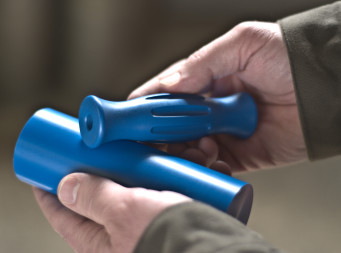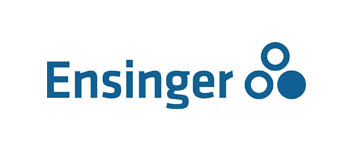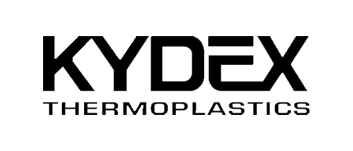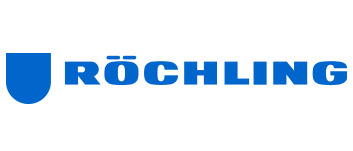Modern Plastics
Application development for medical devices requires knowledge of material properties to support function, chemical compatibility with sanitizing cleaners and sterilization methods, as well as issues of biocompatibility based on intended use. Material suppliers are challenged to not only address the tried and true basics regarding the limitations of materials to support mechanical function, but also whether a material is safe to use in contact with the body, or for use in a general medical environment. There are some unique considerations to think about before recommending a material for a medical device that includes the working environment the device will be used in. This is the case for instance when considering magnetic resonance (MR) assisted surgery. There are also questions as to potential changes in the polymer when it is exposed to traditional and new sterilization methods such as radiation and hydrogen peroxide plasma. The flip side of that issue is what effect the material has on the efficacy of the sterilization method.
The basics start with the same questions we would ask regarding any thermoplastic application. Questions regarding such things as ambient operating temperature, and pressure / load velocity should be explored before selecting the potential material candidates for example. However, when exploring medical applications, it is truly the overlooked details that may result in unintended consequences. To confidently make a material recommendation, the following criteria should always be addressed.
Intended Use
Intended use is broken down by the regulatory guidelines enumerated in ISO 10993 which describes the type and duration of contact the device will have with skin, mucosal membrane, or blood and tissue. Duration limits are 24 hours, 30 days and permanent.
On first look, this seems pretty self explanatory, but it gets tricky as to how the FDA will interpret the device’s type of contact and the duration. Some examples of unclear areas follow.
An inhaler in which the material in question is used inside the device, but is exposed to the air path is a good example of this type of contact issue. The initial thought might be that there is no direct patient contact. The FDA however, would look at this as a mucosal contact application since there could be “extractables” from the material transferring to whatever is traveling though the air path of the device and into the patient.
In addition, duration issues can potentially be challenged in wound care. The device may be in contact with the skin in this case, removed daily, and replaced with a new device during the healing process. Initially you might think of the duration as only 24 hours when in fact, the FDA could view it potentially as 30 days of contact, since the device is replaced daily during the healing process.
The FDA will also apply ISO 10993 testing criteria based on the intended use of the thermoplastic material produced by specific processes (such as injection molding or extrusion) in order to account for any material changes that might occur during processing. The FDA prefers it when supplier specific testing takes into account the SOP used to actually produce the product. In addition, OEMs prefer seeing lab reports that reflect testing on extruded shapes (or molded parts) as opposed to testing based on resin only. Lab reports are also always preferred over statement letters from resin or material suppliers to confirm that testing was done, and no issues where found. Hard lab data is much preferred to statement letters.
Sterilization Methods
Sterilization methods also limit choices of potential materials. Many of the devices used in orthopedic surgery are reused. After surgery, materials are cleaned with a high pH cleaner and then steam sterilized in an autoclave. This combination of heat and water in the form of steam limits the selection of plastic materials to a handful of candidates.
There has been a trend recently to make single use devices that can then be handled as revenue generators for the OEM and billed to the patient when used in a surgical procedure. Currently, reusable devices are provided at no cost to the surgeon to support the surgical procedure that places the implant in the body. However, these are not billable items. Thus, with the migration to single use devices increasing, the sterilization method is changing to one in which gamma exposure with the device in package is preferred. Gamma radiation will create changes in the polymer which again captures the eye of the FDA with respect to the validity of the ISO 10993 test performed on raw materials that were not exposed to radiation prior to testing.
Some raw materials ultimately end up in surgical devices that also contain sensitive electronic components. If these are repeated use devices, the sterilization process needs to be something that can occur at the hospital and does not use heat and moisture. Cold sterilization employs hydrogen peroxide plasma gas at temps of ~ 120 F. One filter to consider for a material selection for a device intended for cold sterilization is the chemical resistance of the material to hydrogen peroxide. Another is whether the material will disrupt the cycle process by reducing the available H2O2 to achieve sterilization. Sensors on these systems track H2O2 availability. When it drops below an acceptable range, the sterilization cycle is aborted, requiring the process to be re-started. Some thermoplastics are eliminated from consideration due to this even though they are perfectly fine after exposure to this environment.
Finally, Ethylene oxide (EtO) is a bulk sterilization process for single use devices. EtO does not present any compatibility challenges with plastics but has an affinity to some and residuals become an issue.
Long Term Commitment
Even after filtering through the menu of materials to fit the full requirements of an application and supplying the proper product to the customer, it is important to understand that the medical material supplier’s commitment to the transaction is not complete when the invoice is paid. Everyone in the supply chain is expected to maintain documentation of lot traceability for as long as 20 years after shipment for surgical instruments. Material retains from each resin lot used for the medical shapes are also helpful in addressing any issues that might arise from the device over time. Part of the higher price that medical materials command is necessitated by the post order commitment suppliers have to manage the information that relates to each specific sale. The supply chain in this case is only as good as the ability of each link in the chain to maintain this documentation. The FDA recognizes this, and stresses that each member of the supply chain take responsibility for auditing the level previous to be sure expectations are being met, and documentation is maintained.
So you can see that application development in the medical industry is much more than just a matter of making sure the thermoplastic can stand up to the physical requirements of the part. It is also in everyone’s best interest to be sure all parties are aware of their responsibilities throughout the process when making the decision to participate in medical material supply. All should be sure to align themselves with only those partners who also fully understand and accept the rigors and requirements of this industry.










